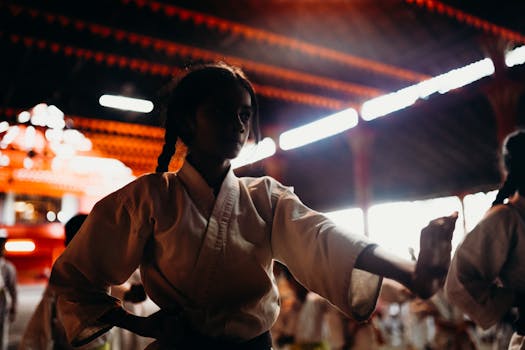Introduction to Taekwondo
Taekwondo, a Korean martial art, is renowned for its dynamic kicking techniques and philosophical underpinnings. Originating in the mid-20th century, it has evolved into a global sport and a means of self-defense, emphasizing discipline, respect, and personal development. This article delves into the various aspects of Taekwondo, including its kicks, disciplines, forms, and the philosophy that guides practitioners.
The Art of Kicking
One of the most distinctive features of Taekwondo is its emphasis on kicking techniques. Taekwondo practitioners, known as taekwondoin, utilize a variety of kicks that are not only effective in combat but also showcase athleticism and agility. Some of the most common kicks include:
- Front Kick (Ap Chagi): A straightforward kick aimed at the opponent’s midsection or face.
- Roundhouse Kick (Dollyo Chagi): A powerful kick that strikes with the instep or ball of the foot, targeting the side of the opponent.
- Side Kick (Yeop Chagi): A lateral kick that delivers force through the heel or side of the foot, effective for both offense and defense.
- Back Kick (Dwi Chagi): A kick delivered by turning the body away from the opponent, striking backward with the heel.
- Hook Kick (Huryeo Chagi): A kick that curves around to strike the opponent, often used to target the head.
These kicks are not only practical but also serve as a means of expression for taekwondoin, showcasing their skill and creativity during competitions and demonstrations.
Disciplines of Taekwondo
Taekwondo is divided into several disciplines, each focusing on different aspects of the martial art. The primary disciplines include:
- Sport Taekwondo: This discipline emphasizes competition and is governed by the World Taekwondo Federation (WT). It includes sparring (kyorugi) and is an Olympic sport.
- Traditional Taekwondo: Focused on the preservation of traditional techniques and forms (hyung), this discipline emphasizes self-defense and personal development.
- Self-Defense: This aspect teaches practical techniques for real-life situations, focusing on awareness and avoidance as well as physical defense.
- Breaking (Kyukpa): A demonstration of power and precision, breaking involves striking boards or other materials to showcase technique and strength.
Each discipline offers unique benefits, allowing practitioners to choose their focus based on personal goals and interests.
Forms: The Heart of Taekwondo
Forms, or hyung, are a series of movements that simulate combat against imaginary opponents. They are essential for developing technique, balance, and rhythm. Practicing forms helps taekwondoin internalize movements and improve their overall skill level. Some well-known forms include:
- Taegeuk Forms: A series of 8 forms representing the principles of yin and yang, each form corresponds to a specific belt level.
- Black Belt Forms: Advanced practitioners learn additional forms, such as Koryo and Keumgang, which are more complex and require a deeper understanding of technique.
Forms are often performed in competitions, where judges evaluate the precision, power, and fluidity of the movements.
The Philosophy of Taekwondo
Beyond physical techniques, Taekwondo is deeply rooted in philosophy. The core tenets of Taekwondo include:
- Courtesy (Ye Ui): Practitioners are taught to show respect to instructors, fellow students, and opponents.
- Integrity (Yom Chi): Taekwondoin are encouraged to be honest and uphold moral principles.
- Perseverance (In Nae): The discipline emphasizes the importance of persistence in overcoming challenges.
- Self-Control (Guk Gi): Practitioners learn to control their emotions and reactions, both in and out of the dojang (training hall).
- Indomitable Spirit (Baekjul Boolgool): This principle encourages a strong will and determination to face adversity.
These philosophical principles guide practitioners in their training and daily lives, promoting personal growth and ethical behavior.
Conclusion
Taekwondo is more than just a martial art; it is a comprehensive system that combines physical skill with mental discipline and ethical values. From its dynamic kicks and diverse disciplines to its intricate forms and profound philosophy, Taekwondo offers practitioners a holistic approach to self-improvement. Whether one seeks to compete, learn self-defense, or develop personal character, Taekwondo provides a pathway to achieving these goals. As the art continues to grow globally, its core values remain a beacon for those who practice it, fostering respect, integrity, and perseverance in all aspects of life.
